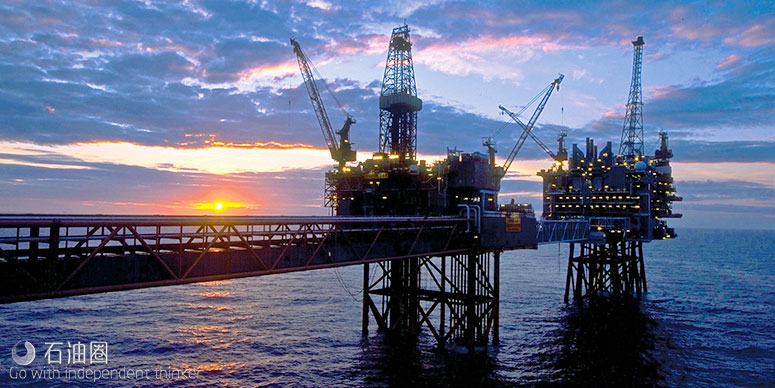Navigating tight restrictions
Casing sizes for deepwater wells are evolving, in particular as operators seek to increase their burst and collapse thresholds. As casing sizes evolve, so must centralizers. “Every time we have a different casing size, we have to build a prototype centralizer and test it,” Mr Levie said. “Over the last year and a half to two years, we’ve probably built and tested at least 200 different centralizer models as a result of those various casing sizes.”
In deepwater wells, narrow annular clearance and tight restrictions are common, and centralizer subs are often used because they do not add to the casing diameter. However, these subs can be costly and require being threaded to casing. Specially designed slip-on, or on-the-pipe, centralizers, which fit around the casing, can be up to two-thirds less expensive than centralizer subs and can replace the need for centralizer subs in some applications.
Regardless of which type of centralizer is used, however, they must achieve enough standoff in the hole to allow drilling mud to be properly displaced out by cement, so residual mud does not contaminate the cement and potentially impact the quality of the cement job. Achieving the necessary standoff can be even more challenging in deviated wells, where gravity will pull the casing to one side of the well. “If you don’t get good cement, you don’t get good isolation,” Mr Levie said. “You might have to go back in and squeeze cement, which could take several days and add substantial cost to the operations.”
Rotating casing can help it pass through tighter restrictions and aid in mud removal. Therefore, operators often seek out centralizers designed to enable casing rotation.
Antelope Oil Tool is focusing on developing on-the-pipe-solutions – slip-on centralizers for close-tolerance environments that add very little to the casing OD. “You have to have a centralizer that can compress down as it’s run through the previous casing section and then expand into the underreamed hole section in order to get the standoff that you need,” Mr Levie said. Although centralizer subs have historically dominated the market in environments with narrow clearances, Antelope said it sees an opportunity for slip-on centralizers to be used in many deepwater applications as an alternative solution, when paired with a proprietary anchoring device.
In April 2015, the company introduced the CentraMax line of on-the-pipe-solution, bowspring slip-on centralizers and subs, which were engineered for close-tolerance environments with low annular clearance. “Our CentraMax centralizers are able to pass through annular spaces with clearance as tight as 3/8-in. but still give sufficient restoring force in the underreamed section,” Mr Levie said.
Typically, bowspring centralizers are watermelon-shaped, but the company opted for a close-tolerance geometry. This allows the centralizer to achieve the desired running forces and stand-off requirements.
Welds, which are a potential point of failure in bowspring centralizers, have been eliminated in the design. “As the bow is compressed, a lot of force is transferred to that weld. So if there’s a place the bow’s going to fail, it’s most likely at that weld,” Mr Levie said. Rather than weld the bowspring to the collar, as is typically done, Antelope provides a single-piece design for its CentraMax centralizers.
Three models are offered. The PI1 is pushed into the restriction from behind with a limiting or anchoring device, and the PT1 is pulled into the restriction. The RT-1 is also pulled into the restriction but is designed so that the pipe can be rotated, utilizing an anchoring device in the middle of the end collars, which an operator might choose to do to help move the casing through particularly tight restrictions.
Earlier this year, the RT1 model was run during the primary cement job in the Gulf of Mexico, on the Walker Ridge field in 7,000 ft of water. The operator needed to run 16-in. casing through an 18.25-in. ID restriction at the supplemental hanger and through an 18.125-in. ID restriction at the 22-in. casing shoe track. The RT1 was fitted onto the 16-in. liner, which was run to 24,000 ft and centralized in a 21-in. underreamed hole with 22o of inclination. In the end, Mr Levie said, the operator reduced costs by an estimated 60% compared with running a centralizer sub.
When a slip-on centralizer is not an option in extremely tight restrictions, CentraMax also includes three models of centralizer subs that offer push-in, pull-through and rotating options. “Where there isn’t sufficient annular space between the casing that you’re running and the previous casing or some portion of the previous casing, then that’s where we would recommend running a sub,” Mr Levie said.
However, the company is still working toward developing slip-on centralizers for even-closer tolerance, with the goal of eliminating the need for subs. “Our biggest challenge is trying to find ways to address some of the tighter tolerances with our on-the-pipe centralizers.,” Mr Levie said. “That’s something we’re continually working on, trying to find methods of centralizing that don’t involve centralizer subs.”

 石油圈
石油圈
